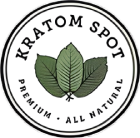
Malaysian Kratom remains one of the most popular types of Kratom on the market. With several Malaysian Kratom strains available, people have the ability to choose which one suits their needs the best so they can fine-tune their research for the desired results. For people new to Kratom, however, understanding exactly what Malay is can be difficult. While Kratom is readily available online, due to increasingly strict regulatory requirements, information from authoritative sources is hard to come by. This leads to plenty of misunderstandings about the distinction between types of Kratom.
To better understand what Malaysian Kratom is, it helps to understand where it comes from.
Malaysia
The small country of Malaysia in Southeast Asia makes up a vital part of the trade based in and around the South China Sea. Split into two parts—Peninsular Malaysia, which borders Thailand in the north, and East Malaysia, which inhabits the northern end of the island of Borneo—this monarch is rich with the lush rain forests and jungle typical of the region. The hot, moist air combines with a naturally acidic soil to create soil that is perfect for growing Malaysian Kratom.
Mitragyna Speciosa
An evergreen tree in the coffee family, Kratom has a long history throughout the region where it has enjoyed a reputation as a medicinal plant among the local population. Renowned for its healing abilities, it caught the attention of researchers who soon found that its active alkaloids— specifically mitragynine and 7-hydroxymitragynine (though there are over 40 other active compounds)—merited further study. Malaysian Kratom proved to be an excellent source for these compounds, which is why so many people choose to start their Kratom research with it.
Types of Kratom
Kratom is usually sold by location grown and vein color, with these variations being referred to as “strains” by the Kratom community at large. In reality, it is the same plant, just grown in different areas with leaves taken from different parts of the tree. While the region’s rainforests are largely similar, they are not identical, and Kratom grown in Thailand can be different than Malaysian Kratom in active chemical content and the effects that the active compounds have on your research.
In addition to geographical origin and vein color, Kratom is also sold as powders and extracts, with some people also referring to these as different strains. The extract, however, is just a purified version of the active compounds from the usual powder. As an example, you might see green, red, white, and ultra Malaysian Kratom Strains listed for sale. We’ve adopted this standard industry nomenclature ourselves so we can share a familiar terminology with our customers.
Popular Malaysian Kratom Products
We carry a wide range of Malaysian Kratom products sourced directly from the fertile regions of Malaysia. We work directly with local farms to find fresh, potent product grown in a sustainable way that helps the land and community provide the Kratom you need today and prepare for the generations of Kratom producers, researchers, and enthusiasts of the future. Here are some of the most popular Malaysian Kratom Products available:
- Red-Vein Powder—Red-veined Kratom leaves generally exhibit a higher potency of 7-hydroxymitragynine.
- White-Vein Powder—While mitragynine usually possesses the highest concentration of any of Kratom’s active compounds, in white-veined powders the ratio is decidedly heavier than some counterparts.
- Green-Vein Powder—Green-veined Kratom is often thought of as the midpoint between red and white-veined varieties.
- Ultra Powder—This extract gives you a more potent and pure version of the active compounds found in the base powder.
- Capsules—Capsules are perfect for providing a standardized amount of Malaysian Kratom. These let you explore Kratom using a precise, pre-portioned amount of product.
Ensuring Your Kratom’s Quality
When buying Kratom, it’s important to make sure you’re getting your money’s worth. Kratom quality begins to degrade as soon as it is harvested, and fresher Kratom will give you better results due to its intact potency. The first step to ensuring you are getting good kratom is to use a reputable supplier who can move it through its production stages and get it shipped to you quickly. One of the reasons we work directly with local suppliers is to ensure we know the providence of our Kratom. This lets you ensure you’re not getting “last year’s leftovers.”
Once you get your Malaysian Kratom, perform a full inspection. Powders should be a rich, vibrant green. Fleck tinged with the vein color may be present, but the overall hue should still be an overall green. The powder should have a fine, soft texture that looks almost fluffy when loosely packed. Powders that are coarse hunky may have been poorly processed or had chemicals used which changed the natural structure of the product. Duller or faded colors could be a sign of age.
Your nose can be another indicator of quality. Whatever the Malaysian Kratom strain, it should have a natural aroma. This can be the bitter tang of the alkaloids mixed with the general smell of vegetation. It should not smell like mold, which can be a sign your Kratom was contaminated by poor processing or became wet in transit. In addition, a strong chemical odor may mean your Malaysian Kratom was processed using harsh chemicals that were not fully removed during processing.
Order The Best
Getting the best results from your Kratom starts by ordering high-quality products from a supplier you can trust. We’re proud to be at the forefront of Kratom, both Kratom processing and advocacy, where we work hard to ensure you’ll continue to have access to premium Kratom for research by responsible adults.
If you have any questions about our products, processes, or how we’re helping the Kratom industry grow, call our experts at (888) 510-2038. Order your Malaysian Kratom products online from Kratom Spot today.


